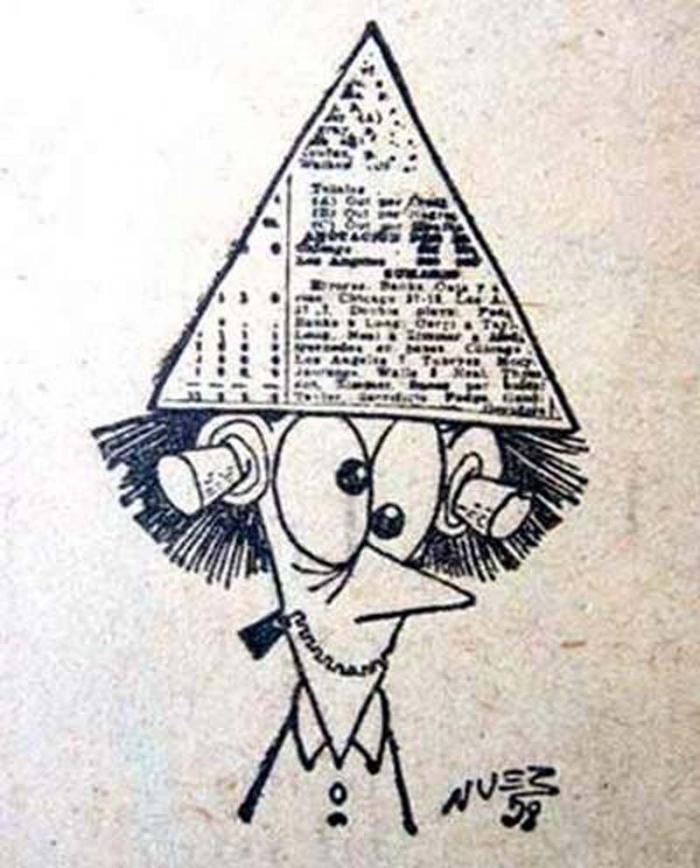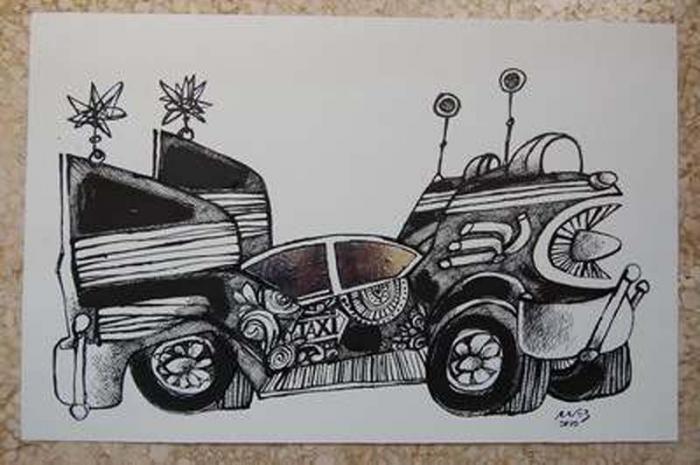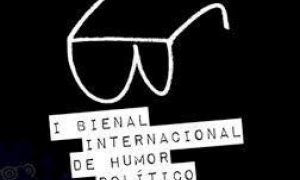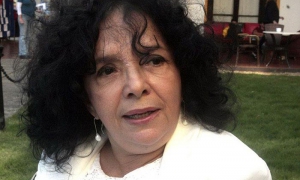René de la Nuez, with his wry look, watery blue eyes and more than 50,000 drawings to his credit, considered one of the 100 best cartoonists in the world, left us this January, 2015.

He was tireless in the effort to communicate a critical perspective through humor, since he began drawing in 1957, in his native San Antonio de los Baños. From then on, there was no stopping his pen or paintbrush.
Recalling the characters created by René de la Nuez, beginning with his iconic El loquito, is to recall a gallery of personalities which have no doubt become part of popular culture, a testament to his skill, intelligence and Cuban identity.
El Loquito, 57 years of age now, lives on in the popular imagination. It was precisely this cartoon character which won De la Nuez the 2007 National Prize for Visual Arts.
Through cartooning, the artist attempted to capture a historic memory of his times, and the body of his work shows that he did accomplish this.
We enjoyed innumerable conversations/interviews which began in the elevator and continued in his home-studio on the 11th floor of a building on the Avenida de los Presidentes, in Havana’s Vedado, where we were neighbors for more than three decades.
Some questions and answers we shared:
Your thoughts on humor?

“Humor is not something easy. A comedian must be a man of his times, well informed, up to date, but must also know how to dig deeper. I never have liked doing humor just to entertain, to make people laugh, there are other ways to do that. I have always liked humor as reflection, so the comedian does have to be a man of his times, if not he can’t find that. Those who have lived long lives, as I have, have passed through many eras, and I am happy to have lived them.”
The great cartoonist, sketch artist and conversationalist gave us, during his last years, his vision of Havana, with precise brush strokes reflecting his powers of observation – and, as always, with aesthetic and technical quality.
Thus we have enjoyed, for example, his exposition Almendrones de Nuez, in the Pablo de la Torriente Brau Cultural Center’s Majadahonda Hall, the last of a series which included La bicicleta (Havana’s basic form of transportation in the 90s); el Humor habano, with cigar rings, seals, and all sorts of references to tobacco in the city; and La pícara Habana.
Ancient U.S. vehicles from the 30s, 40s, and 50s, still plying the city’s streets loaded with passengers, have been fancifully called Almendrones, a reference to the almond shape of the earliest models.
“My almendrones are artistic images, not copies of old cars. I have wanted to give them characteristics showing that they are themselves a great museum. It isn’t a car, but it is, with people inside, destinations, the Capital, the city’s neighborhoods…”
They follow what you have called your human architecture.
“My purpose has been to work on leaving a graphic memory of Havana. Not that of Lezama, or Carpentier, or Portocarrero. It is another one, in which the architecture is human, it is the soul of the city, constantly transforming itself. I have tried to capture this movement, the motivations behind how the people are.”
A historic memory as well …
“Yes, I would like these series I have done on Havana to constitute, as you say, a historic memory of what this city is, what it was during this era. When you want to paint a carriage, a lady from the 19th century, you need to go to the drawings of Landaluze. I would like people to go to my drawings when they want to paint the Havana of these times.”
Your sketches and cartoons always convey some social criticism…
“That is my interest, without criticism there is no humor, to say it straightforwardly, because humor is based on a kind of self-criticism, on laughing at ourselves. I don’t make a joke, I take reality which is at times more entertaining that what one can imagine. Humor always implicitly contains criticism, a humorist provokes.”
De la Nuez never abandoned cartooning, saying, “For me, drawing is a vital necessity,” although he did mount several expositions of paintings, and said, “I am a drawer who also paints on large canvases.” He additionally produced 20-some books, including En un lugar de la tinta (about Don Quixote and Sancho Panza); El Libro del yo and El humor Nuez-tro de todos los días.
This acute, wry commentator on daily life, his cartoons on the pages of a newspaper, magazine or website, and the quick elevator conversations will be missed.
René de la Nuez, the lucid chronicler of our contemporary reality, has bid us farewell this 2015, reminding us of the verses of a grand song, “When a friend departs, a star has been lost…”






